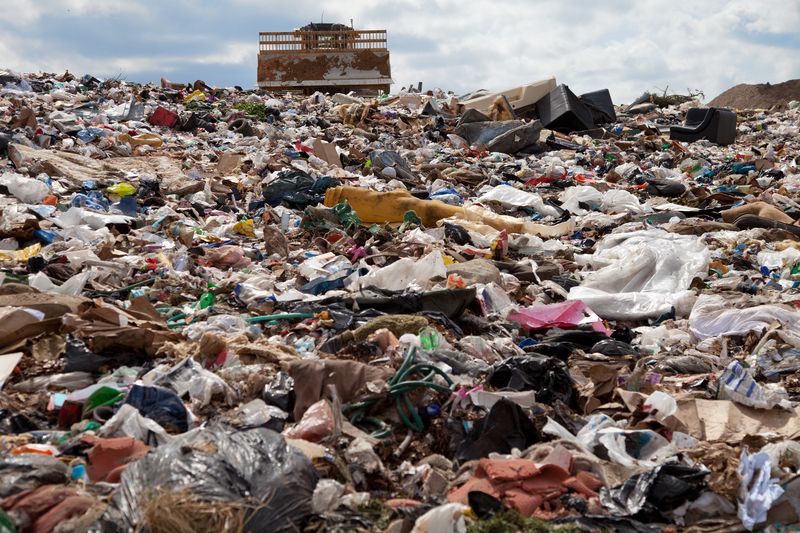Companies Making Strides with Eco-Conscious Packaging and Cardboard Disposal
The global shift towards sustainability has reached new heights, with companies of all sizes prioritizing eco-conscious packaging and responsible cardboard disposal. As environmental challenges mount, reducing packaging waste and enhancing recyclability have become core business goals across industries. In this comprehensive article, we will explore innovative strategies, spotlight leading organizations, and discuss best practices for environmentally responsible packaging and cardboard recycling.

Why Eco-Conscious Packaging and Cardboard Disposal Matter
Packaging waste is a significant contributor to global landfill and ocean pollution. Single-use plastics and non-biodegradable packaging materials can persist for centuries, harming ecosystems and wildlife. In contrast, eco-friendly packaging and proper cardboard waste management help mitigate these impacts--reducing carbon footprints, conserving resources, and supporting a circular economy.
Major Benefits of Sustainable Packaging and Disposal
- Resource Conservation: Eco-conscious brands use recycled materials, which minimizes the exploitation of virgin resources.
- Waste Reduction: Innovative designs and materials lead to less packaging and lower overall waste generation.
- Lower Environmental Impact: Switching to compostable, biodegradable, or easily recyclable materials like cardboard slashes landfill contributions.
- Brand Value: Consumers increasingly demand companies align with sustainable values, boosting brand credibility and loyalty.
- Compliance: Many countries are introducing strict sustainability regulations regarding packaging and waste disposal practices.
Front-Runners in Eco-Conscious Packaging and Cardboard Disposal
Let's highlight a diverse range of companies making progress in sustainable packaging and cardboard recycling. Their solutions illustrate the broad potential and tangible advantage of eco-friendly operations.
1. Amazon: Recycling Initiatives and Smart Packing Algorithms
Amazon is one of the world's largest retailers and shipping companies, making its packaging decisions especially impactful. The company established its "Frustration-Free Packaging" program to reduce unnecessary waste, with over 1.6 million products now shipping in 100% recyclable packaging--frequently corrugated cardboard. By leveraging AI-driven packing algorithms, Amazon minimizes the use of oversized boxes, further reducing material use and shipping emissions.
To tackle cardboard disposal, Amazon encourages consumers to recycle boxes and has set up drop-off locations in select areas for easier access to recycling programs, providing guidance online for proper cardboard breakdown and disposal.
2. Unilever: Embracing Recycled Content and Circular Design
Consumer goods giant Unilever has integrated eco-conscious packaging into its long-term business strategy. With a commitment to make all plastic packaging fully reusable, recyclable, or compostable by 2025, Unilever is also a major proponent of cardboard use, particularly recycled and FSC-certified sources.
- Unilever has eliminated secondary cardboard packaging where possible and switched to lighter-weight boxes for improved efficiency.
- The company participates in local partnerships to boost community recycling rates, sharing educational resources on proper disposal practices.
3. IKEA: Closed-Loop Cardboard and Flat-Pack Efficiency
IKEA's entire furniture business is based on flat-pack packaging, reducing the volume of cardboard needed and slashing emissions from transportation. The company sources most cardboard from post-consumer recycled fibers and designs boxes for easy breakdown and recycling. Furthermore, IKEA has launched in-store cardboard recycling collection points for customers, promoting responsible disposal of packaging waste after product assembly.
4. Dell: Pioneering the Use of Mushrooms and Bamboo
Beyond cardboard, Dell has introduced highly innovative, compostable packaging options--combining molded mushroom fiber and bamboo cushioning with recyclable cardboard outer shells. The result? Computers and electronics are shipped securely while minimizing landfill waste. Dell also operates robust take-back programs, making it easy for customers to return used packaging for proper processing.
5. Coca-Cola: Recycled Cardboard in Beverage Multipacks
Coca-Cola has pioneered the use of 100% recycled cardboard carriers for its beverage cans and bottles in many markets. With new "KeelClip" packaging, plastic rings are replaced, dramatically reducing plastic pollution. Coca-Cola's recycling partnerships enhance the collection of used cardboard and encourage responsible disposal through consumer education and community events.
6. Walmart: Sustainability Goals and On-site Cardboard Baling
Retail giant Walmart channels vast quantities of cardboard through its supply chain. In partnership with suppliers, the company has initiated widespread corrugated packaging redesigns to cut material usage and bolster box recyclability. Walmart's retail locations feature on-site balers, compressing used cardboard for shipment to recycling plants--ensuring that almost all cardboard is recycled rather than landfilled.
Emergent Eco-Packaging Companies & Cardboard Disposal Startups
Alongside global corporations, smaller players and emerging startups are disrupting the packaging landscape with groundbreaking sustainable solutions and efficient cardboard disposal models.
Notable Innovators to Watch
- Noissue: Delivers branded, compostable, and fully recyclable packaging to businesses of all sizes. Their products include custom cardboard boxes and tissue paper made from sustainably managed forests.
- PulpWorks: Creates molded fibre packaging from recycled paper and cardboard, replacing plastic clamshells for electronics and cosmetics.
- ReBox: Partners with retailers to collect, refurbish, and resell sturdy used cardboard boxes, keeping packaging in use and out of landfill.
- Loop Industries: Offers a reusable packaging delivery model, in which customers return empty cardboard and other containers for washing and reuse.
Strategies for Eco-Conscious Packaging in Business
Adopting sustainable packaging practices and efficient cardboard disposal isn't limited to major corporations. Businesses of all types--from startups to SMBs--can benefit by embracing the following approaches:
1. Source Recycled and Certified Materials
Choose suppliers that provide FSC-certified cardboard and other responsibly harvested paper materials. Supporting recycled content not only conserves forests, but also signals environmental stewardship to customers.
2. Minimize Packaging Volume
Smarter package designs--such as right-sizing boxes to products--reduce the need for extra fillers and cut shipping weight. This lowers transportation emissions and helps businesses save on material costs.
3. Clearly Mark Recyclable and Compostable Components
Use visual cues and clear labeling so consumers recognize how to dispose of packaging responsibly. Include instructions for cardboard breakdown and recycling, and highlight use of biodegradable materials when applicable.
4. Educate and Empower Customers
Proactively share information--online and on-pack--about the importance of eco-friendly packaging disposal. Partner with local municipalities or recycling providers to boost rates and ensure collected cardboard is properly processed.
5. Close the Loop with Take-back Programs and Collection Points
Implement options for customers to return used packaging--whether by offering in-store collection bins or participating in area recycling initiatives. These programs keep valuable cardboard material circulating in the recycling stream.
Cardboard Disposal: Best Practices and Environmental Impact
Proper cardboard disposal is critical to realizing the environmental benefits of recycled packaging. Whether you're a business or a consumer, embracing best practices for cardboard recycling can have a transformative effect.
Key Steps for Effective Cardboard Disposal
- Break down boxes completely to maximize space in recycling bins and minimize transportation emissions.
- Remove all non-recyclable elements: plastic tapes, labels, or polystyrene inserts.
- Keep cardboard dry and free of food residue, as contamination reduces recyclability.
- Leverage local recycling programs, or deliver boxes to drop-off locations set up by retailers and municipalities.
Understanding the Cardboard Recycling Process
Cardboard collected through recycling streams is:
- Sent to recycling centers and sorted by quality.
- Shredded into small pieces and mixed with water to create pulp.
- Filtered and de-inked to remove dyes, glue, or tape residues.
- Pulp is pressed and dried, then rolled into massive sheets for new product manufacturing.
This closed-loop lifecycle means a cardboard box can be recycled up to 5-7 times before its fibers become too short and weak, after which they can be composted or used in fiberboard.
The Role of Legislation and Industry Standards
Government mandates and industry consortiums are accelerating the adoption of eco-friendly packaging and improved cardboard disposal methods.
- Extended Producer Responsibility (EPR): Laws in the EU, Canada, and some US states require businesses to collect and recycle their own packaging waste.
- Recyclability Standards: Regulatory agencies are promoting "widely recyclable" certifications and phasing out single-use plastics.
- Corrugated Packaging Industry Initiatives: Groups like the Corrugated Packaging Alliance (CPA) work to increase recycled content and improve curbside collection infrastructure.
Adherence to these legislation-driven best practices is now a prerequisite for many international partnerships and supply chains.

Looking to the Future: The Next Steps in Sustainable Packaging
The future of eco-conscious packaging and cardboard disposal is dynamic and full of promise. Continuous product innovation, advances in biodegradable materials, and smart recycling systems are making it easier for both companies and consumers to choose sustainable paths.
- Biodegradable Alternatives: The rise of packaging made from cornstarch, seaweed, and agricultural byproducts is reducing reliance on wood-derived cardboard and plastics.
- Digital Tracking: Smart barcodes or QR codes on packaging can help consumers access real-time recycling instructions based on their location.
- Automated Recovery: AI-driven sorting systems at recycling facilities improve quality and quantity of recycled cardboard, supporting higher recycled content rates.
- Integrated Reuse Systems: Returnable packaging models--encouraged by e-commerce and grocery delivery startups--keep cardboard and other materials out of the waste stream for longer.
Conclusion: How Businesses and Consumers Can Lead Change
As the examples above illustrate, companies making strides with eco-conscious packaging and cardboard disposal are driving profound changes in how products move from factory to consumer. These companies are not only reducing waste and shrinking their environmental footprints, but also inspiring others--partners, competitors, and customers alike--to join the movement for a healthier, more sustainable planet.
Whether you are a business leader seeking to differentiate your brand, or a consumer determined to minimize your impact, the solutions are clear: embrace eco-friendly packaging, prioritize recyclable cardboard, and dispose of packaging responsibly. In doing so, every stakeholder contributes to a greener future and a circular economy that benefits all.
Now is the time to take action--because the choices we make today will ultimately define the world we leave for tomorrow's generations.